| |
|
Xiamen Oil Paintings, Wholesale Direct!
|
|
100% hand painted, 100% cotton canvas, 100% money back if not satisfaction. |
|
|
|
|
ART WORKS INDEX
A
B
C
D
E
F
G
H
I
J
K
L
M
N
O
P
Q
R
S
T
U
V
W
X
Y
Z
|
|
ARTISTS INDEX
A
B
C
D
E
F
G
H
I
J
K
L
M
N
O
P
Q
R
S
T
U
V
W
X
Y
Z
|
|
|
|
 |
Bonnat, LEon
|
|
French, 1833-1922.French portrait and historical painter. He is best known for his portraits of famous men, including Thiers, Victor Hugo, and Dumas fils. Bonnat is represented in the Metropolitan Museum.
|
|
 |
Bonnard, Pierre
|
|
French, 1867-1947
French painter and printmaker. He studied at the Academie Julian and the École des Beaux-Arts (1888 C 89). In the 1890s he became a leading member of the Nabis group and came under the influence of Art Nouveau and Japanese prints. With his friend Édouard Vuillard, he developed the intimate domestic interior scene, a genre known as Intimism, depicting fashionable Parisian life in the years before World War I. He also produced still lifes, self-portraits, seascapes, and large-scale decorative paintings. In 1910 he discovered the south of France and began a series of luminous landscapes of the Mediterranean region. He was fascinated by perspective, which he employed in paintings such as The Dining Room (1913). From the 1920s he specialized in landscapes, interiors, views of gardens, and bathing nudes. He produced illustrations for the celebrated journal Revue blanche and decorative pages for Paul Verlaine's book of poetry Parallelement (1900).
|
|
|
|
|
|
|
|
 |
BONFIGLI, Benedetto
|
|
Italian painter, Umbrian school (b. ca. 1420, Perugia, d. 1496, Perugia)
Benedetto Bonfigli (c. 1420?CJuly 8, 1496) was an Italian painter of the Quattrocento born in Perugia, and active around Umbria. He is also known as Buonfiglio. He was the teacher of the painter Pietro Perugino.
His earliest work was an ' Annunciation,' originally in the Orfanelli at Perugia. His masterpiece is a series of frescoes in the Palazzo del Consiglio in the same city, which represent the Lives of St. Louis of Toulouse and St. Herculanus; they were begun in 1454 and not finished in 1496, in which year Bonfigli's will is dated. An Adoration of the Magi (c. 1460) was painted for San Domenico. A Banner (gonfalone) was painted in 1465 for the brotherhood of San Bernardino, and representing the deeds of their patron saint; another Gonfalone painted for the brotherhood of San Fiorenzo in 1476, in honor of the Virgin, who had been prayed to intercede for the cessation of the plague. He painted a Virgin of Mercy' (1478) for the church of the Commenda di Santa Croce; and several others in and around Perugia. He was much influenced by Domenico Veneziano and Pietro della Francesca. He also painted frescoes of Sant Ercolano and San Ludovico (1454) for the Palazzo del Consiglio. He died in Perugia.
|
|
 |
BONE, Henry
|
|
British, 1755-1834,Cornish enamel painter, was born at Truro. He was much employed by London jewellers for small designs in enamel, before his merits as an artist were well known to the public. In 1800 the beauty of his pieces attracted the notice of the Royal Academy, of which he was then admitted as an associate; in 1811 he was made an academician. Up to 1831 he executed many beautiful miniature pieces of much larger size than had been attempted before in England; among these his eighty-five portraits of the time of Queen Elizabeth, of different sizes, from 5 by 4 to 13 by 8 in. are most admired. They were disposed of by public sale after his death. His Bacchus and Ariadne, after Titian, painted on a plate, brought the great price of 2200 guineas. He had 2 sons, who were also notable enamallists: Henry Pierce Bone & Robert Trewick Bone.
|
|
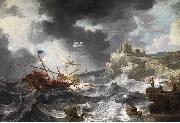 |
Bonaventura Peeters
|
|
(Antwerp, 23 July 1614 - Hoboken (Antwerp), 25 July 1652) was a Flemish Baroque painter who specialized in seascapes and shipwrecks, known as Zeekens (small seascapes).
Peeters, brother of the seascape painters Jan Peeters I, Gillis Peeters, and Catharina Peeters, learned to paint from his father, who became a master in Antwerp's guild of St. Luke in 1607 - 1608, and his earlier works are related to the tonal phase of Dutch landscape painting. Later paintings, however, reflect the stronger colors of Italianate classicism. This shift follows the general changes in artistic style at the time. Like his brother Jan, dramatic shipwrecks with dark billowy clouds, form a significant part of his oeuvre, as do serene ports and "portraits" of ships.Also, while many of Peeters's paintings reflect actual locations, and he may have even travelled along the coast of Scandinavia, his many views of far-away Mediterranean and Middle Eastern ports reflect a growing taste for the exotic and are probably inspired from fantasy and from prints. This tradition developed simultaneously in Flemish painting and in Dutch Golden Age painting, with many artists, including Peeters, working in both Antwerp and in the Dutch Republic.
|
|
|
|
 |
Bon Boullogne
|
|
(bapt. February 22, 1649 - May 17, 1717) was a French painter.
Boullogne was born in Paris, a son of the painter Louis Boullogne;[1] he was regarded as the most gifted of his children. He took his first lessons from his father, whom he is thought to have assisted in the Grande Galerie of the Louvre. Through his father, who presented a half-length figure of St John by Bon to Jean-Baptiste Colbert, Contrôleur General des Finances, he was sent to the Academie de France in Rome as a Pensionnaire du Roi. In this capacity, he made copies of famous works, in particular some frescoes by Raphael in the Vatican Loggie, intended for reproduction as Gobelins tapestries. The period he then spent in Lombardy helped to complete his training. He studied the work of Antonio da Correggio and the Annibale Carracci, as well as Guido Reni, Domenichino and Francesco Albani. Bones painting, especially the mythological work, shows great affinities with the work of the Bolognese school, which was also to be found in the royal collections. Also of influence to Bon was Nordic art, as demonstrated in his female portraits framed by plant like motifs, a device taken up by his pupil Robert Tournieres. He died in Paris.
|
|
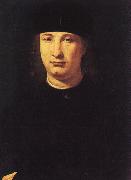 |
BOLTRAFFIO, Giovanni Antonio
|
|
Italian High Renaissance Painter, ca.1466-1516
Italian painter and draughtsman. A pupil of Leonardo da Vinci, he was active mainly in Milan and was particularly noted as a portrait painter.
|
|
 |
BOLLONGIER, Hans
|
|
Dutch painter, Haarlem school (b. ca. 1600, Haarlem, d. ca. 1675, Haarlem)
Hans Gillisz. Bollongier or Boulenger (Haarlem, 1600-idem, 1645) was a still life Dutch painter.
|
|
 |
BOL, Hans
|
|
Flemish Northern Renaissance Painter, 1534-1593
Hans Bol (1534?C1593), Flemish artist, received his early training from his two uncles who were also painters. He then was the apprentice to a Mechelen watercolorist and tempera painter at the age of fourteen. Because Bol??s watercolors became so widely reproduced, he began creating miniatures on parchment. The technique earned him many international clients and a good income. In addition, Bol also produced several oil paintings, illuminated manuscripts, drawings, and engravings. He preferred to create landscapes, mythological, allegorical and biblical scenes, and genre paintings.
|
|
 |
BOL, Ferdinand
|
|
Dutch Baroque Era Painter, 1616-1680
Ferdinand was born in Dordrecht as the son of a surgeon, Balthasar Bol.[2] Ferdinand Bol was first an apprentice of Jacob Cuyp in his hometown and/or of Abraham Bloemaert in Utrecht. After 1630 he studied with Rembrandt, living in his house in Sint Antoniesbreestraat, then a fashionable street and area for painters, jewellers, architects, and many Flemish and Jewish immigrants.[3] In 1641 Bol started his own studio.
In 1652 he became a burgher of Amsterdam, and in 1653 he married Elisabeth Dell, whose father held positions with the Admiralty of Amsterdam and the wine merchants' guild, both institutions that later gave commissions to the artist. Within a few years (1655) he became the head of the guild and received orders to deliver two chimney pieces for rooms in the new town hall designed by Jacob van Campen, and four more for the Admiralty of Amsterdam.
Portrait of a Woman Dressed as a Huntress by Ferdinand Bol, courtesy Figge Art MuseumBy this time Bol was a popular and successful painter. His palette had lightened, his figures possessed greater elegance, and by the middle of the decade he was receiving more official commissions than any other artist in Amsterdam.[4] Godfrey Kneller was his pupil.[5] Bol delivered four paintings for the two mansions of the brothers Trip, originally also from Dordrecht.[6]
Bol's first wife died 1660. In 1669 Bol married for the second time to Anna van Arckel, widow of the treasurer of the Admiralty, and apparently retired from painting at that point in his life.[7]In 1672 the couple moved to Keizersgracht 472, then a newly designed part of the city, and now the Museum van Loon. Bol served as a governor in a Home for Lepers. Bol died a few weeks after his wife, on Herengracht, where his son, a lawyer, lived.
Probably his best known painting is a portrait of Elisabeth Bas, the wife of the naval officer Joachim Swartenhondt and an innkeeper near the Dam square. This and many other of his paintings would in the 19th century be falsely attributed to Rembrandt.
|
|
 |
Bohumil Kubista
|
|
(1884 - 1918) was a Czech painter and art critic, one of the founders of Czech modern painting. He studied at the School of Applied Arts in Prague, but left in 1906 to study at the Reale Istituto di Belle Arti in Florence. He, Emil Filla, Antonin Prochezka, and five others founded Osma (The Eight), an Expressionist-oriented group of artists.
Kubišta came to his individual expression gradually, at first he was influenced by the work of Vincent van Gogh and Paul Cezanne. He educated himself in in philosophy and optics, and studied colour and the geometrical construction of painting.
Kubišta, like several other Czech artists of his generation, was strongly affected by the 1905 Edvard Munch exhibition in Prague. Together with Emil Filla he established the artistic group Osma in 1907. He worked in an Expressionist style until 1910, and exchanged ideas with German painters in Die Bre - ke. He also developed visual ideas learned from the work of Cezanne. His later style (approximately from 1911) was strongly influenced by cubism and expressionism. Expressionist elements, particularly his use of color but also his subject matter, immediately distinguish Kubištaes cubist work from that of founding Paris Cubists Picasso and Braque. He studied color theory, analyzing the harmonic and compositional principles of painters such as El Greco, Eugene Delacroix, Vincent van Gogh, and Edvard Munch. He also paid close attention to mathematical and geometric principles. Around 1911, he became acquainted with Jan Zrzavý and the artistic group Sursum.
He died prematurely during the global 1918 flu pandemic which ravaged Europe after the First World War.
|
|
 |
Bogdan Villevalde
|
|
painted Feat of Cavalry Regiment at the battle of Austerlitz in 1805.
|
|
|
|
 |
BOEL, Pieter
|
|
Flemish Baroque Era Painter, 1622-1674
Flemish painter, draughtsman and etcher. He came from an artistic family: his father Jan Boel (1592-1640), was an engraver, publisher and art dealer; his uncle Quirin Boel I was an engraver; and his brother Quirin Boel II (1620-40) was also a printmaker. Pieter was probably apprenticed in Antwerp to Jan Fyt, but may have studied previously with Frans Snyders. He then went to Italy, probably visiting Rome and Genoa, where he is supposed to have stayed with Cornelis de Wael. None of Boel's work from this period is known. In 1650 he became a master in the Antwerp Guild of St Luke (having given his first name as Jan, not Pieter). His marriage to Maria Blanckaert took place at about the same time. Boel dated only a few of his paintings, making it difficult to establish a chronology. He is best known for his hunting scenes, some of which clearly show his debt to Snyders, but the dominant influence on his work was that of Fyt, particularly evident in his emphatic brushwork. However, Boel was more restrained both in his treatment and in his handling of outline. He also borrowed the theme of open-air hunting still-lifes (e.g. Feathered Game with Three Dogs; Madrid, Prado) from Fyt, but he painted other subjects as well, such as the monumental Vanitas Still-life (e.g. 1633; Lille, Mus. B.-A.).
|
|
|
|
 |
Boccaccio Boccaccino
|
|
(c. 1467 - c. 1525) was a painter of the early Italian Renaissance, belonging to the Emilian school. He is profiled in Vasari's Le Vite delle pie eccellenti pittori, scultori, ed architettori (or, in English, Lives of the Most Excellent Painters, Sculptors, and Architects).
He was born in Ferrara and studied there, probably under Domenico Panetti. Few facts of his life are known. His principal artistic activity was in Venice, Ferrara, and especially in Cremona, where he founded a school in which Garofalo was a pupil.
His most celebrated achievement is the frescoes in the Cathedral of Cremona (1506-1519) representing the Birth of the Virgin and some subjects from her life. His position there was taken over by Altobello Melone. His remaining works, which include the Marriage of Saint Catherine (Accademia), the Virgin and Child with Four Saints (Venice, San Giuliano), the Virgin and Two Saints (Cremona, San Quirilo), and the Holy Family (Paris, Louvre), are considered by Lanzi remarkable for richness of drapery, variety of color, spirit and grace of attitude, and harmony of landscape. Several works formerly attributed to Pietro Perugino, Pinturicchio, and Garofalo are now ascribed to Boccaccino.
His son and pupil Camillo Boccaccino (1501-46) was a painter at Cremona.
|
|
 |
BOCCACCINO, Camillo
|
|
Italian painter, Cremonese school (b. 1504/5, Cremona, d. 1546, Cremona)
Camillo Boccaccino (c. 1504 - 1546) was an Italian painter of the Renaissance period, active mainly in Cremona and regions of Lombardy. He was the son and pupil of the painter Boccaccio Boccaccino. He was known to Gian Paolo Lomazzo and Giorgio Vasari. He painted the four evangelists (1537) in the niches of the cupola of San Sigismondo at Cremona.
|
|
 |
BOCCACCINO, Boccaccio
|
|
Italian painter, Cremonese school (b. before 1466, Ferrara, d. 1524/25, Cremona)
He is first recorded in 1493 in Genoa, where he contracted to paint the high altarpiece (untraced) for S Maria della Consolazione. In 1497 he was extracted from prison in Milan by the agent of Ercole I d'Este, Duke of Ferrara, and worked for the Duke in Ferrara until 1500. Perhaps as a consequence of having killed his common-law wife he then left, presumably for Venice, where he is recorded as residing in 1505. A fresco in Cremona Cathedral is dated 1506.
|
|
 |
Blythe David Gilmour
|
|
American Painter, 1815-1865
He began his career as an itinerant portrait painter in the early 1840s and became one of the leading satirical artists in America by the beginning of the Civil War. Self-taught, from 1840 to 1850 he worked in East Liverpool, OH, and Uniontown, PA, and nearby towns and villages, painting rather stiff likenesses of the local gentry. He also carved a monumental polychrome wooden statue of Marie-Joseph, Marquis de Lafayette for the Uniontown courthouse and painted a landscape panorama of the Allegheny mountains, which he took on tour through Maryland, Pennsylvania and Ohio.
|
|
|
|
|
|
 |
BLONDEEL, Lanceloot
|
|
Flemish Northern Renaissance Painter, 1498-1561
South Netherlandish painter, draughtsman, designer, architect, civil engineer, cartographer and engraver. He is said to have trained as a bricklayer, and the trowel he used to add as his housemark next to his monogram LAB testifies to this and to his pretensions as an architectural designer. In 1519 he was registered as a master painter in the Bruges Guild of St Luke, where he chose as his speciality painting on canvas. The following year he collaborated with the little-known painter Willem Cornu in designing and executing 12 scenes for the Triumphal Entry of Emperor Charles V into Bruges. From then onwards Blondeel received regular commissions, mainly as a designer and organizer. Records of legal actions show that he was sometimes late with commissions; he took seven years to execute a Last Judgement ordered in 1540 for the council chamber at Blankenberge, and in 1545 the Guild of St Luke summoned him for his failure to supply their guild banner on time. Blondeel was married to Kathelyne, sister of the wood-carver Michiel Scerrier; of the two daughters of this marriage, the eldest, Maria, married the tapestry-weaver Andries Hansins before 1542 and the younger, Anna, married Blondeel's pupil, the painter Pieter Pourbus, before 1545.
|
|
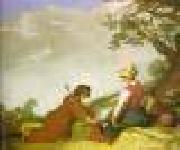 |
BLOEMAERT, Abraham
|
|
Dutch Mannerist Painter, ca.1564-1651
Abraham Bloemaert (1566, Gorinchem - January 27, 1651, Utrecht), was a Dutch painter and printmaker in etching and engraving.
Bloemaert was the son of an architect, who moved his family to Utrecht in 1575, where Abraham was first a pupil of Gerrit Splinter (pupil of Frans Floris) and of Joos de Beer. He then spent three years in Paris, studying under several masters, and on his return to his native country received further training from Hieronymus Francken. In 1591 he went to Amsterdam, and four years later settled finally at Utrecht, where he became dean of the Guild of St. Luke.
He excelled more as a colourist than as a draughtsman, was extremely productive, and painted and etched historical and allegorical pictures, landscapes, still-life, animal pictures and flower pieces. Among his pupils are his four sons, Hendrick, Frederick, Cornelis and Adriaan (all of whom achieved considerable reputation as painters or engravers), the two Honthorsts, Ferdinand Bol and Jacob Gerritsz Cuyp.
|
|
 |
BLES, Herri met de
|
|
Flemish Northern Renaissance Painter, ca.1510-1550
Flemish painter. Both van Mander and Lampsonius recorded Bouvines as his birthplace, although Guicciardini gave it as Dinant. The identification of Herri met de Bles with Herry de Patinir, who was a master of the Antwerp Guild of St Luke in 1535, is generally accepted. He may have been related to Joachim Patinir, possibly a nephew. In the Pictorum aliquot celebrium Germaniae Inferioris effigies (Antwerp, 1572) of Domenicus Lampsonius, Henricus Blesius Bovinati pictori is portrayed aged 40, sporting the type of clothing and beard that were fashionable in 1550.
|
|
|
|
 |
Blarenberghe
|
|
was the name of a dynasty of painters, originally from French Flanders but the most famous descendants lived in Lille and Paris in France. They were all descendants from Joris van Blarenberghe (1612-1670).
The first two painters were Hendrick van Blarenberghe (1646-1712) and his son Jacques-Guillaume van Blarenberghe (1679-1742). Their style was still heavily influenced by the Flemish Baroque style. Jacques-Guillaume had two painting sons, Louis-Nicolas Van Blarenberghe (15 July 1716 - 1 May 1794) and Henri Desire van Blarenberghe (1734-1812).
Louis-Nicolas had a son who was also a painter and with who he often collaborated: Henri-Joseph van Blarenberghe (24 November 1750 - 1 December 1826). Together with his father, they stayed at the Palace of Versailles, where they worked as miniaturists for the high society of their day. They were especially famous for their paintings on snuff boxes. Louis-Nicolas also worked as official campaign painter of the French court, following the French army as a war reporter. Two of his daughters, Catherine-Henriette and Isabelle, were chamber maids to the children of the French kings. The works of Louis-Nicolas and Henri-Joseph were collected in profusion in the 19th century by the Rothschild family. There is a collection of their work on public display at Waddesdon Manor.
Henri-Joseph painted, besides the miniatures, mainly Panoramic paintings, often in gouache. The subjects were, as with his father, often military, and also included the French revolution.
|
|
 |
Blanchet, Louis-Gabriel
|
|
French Painter, 1705-1772
French painter, active in Rome. He won second place in the Prix de Rome competition in 1727 and thereafter settled in Rome, where he enjoyed the patronage of Nicolas Vleughels, Director of the Acad?mie de France, and the Duc de Saint-Aignan (1684-1776), who at that time was French Ambassador to the Holy See. In 1752 Blanchet painted the Vision of Constantine (Paris, Louvre), a copy of Giulio Romano's fresco in the Sala di Costantino in the Vatican. He was, however, principally a portrait painter. His portrait of Tolozan de Montfort (1756; Lyon, Mus. B.-A.) is a fine example of his elegant, rather nervous style and his distinctive use of colour. In the same year Blanchet executed a portrait of the contemporary painter Johann Mandelberg (1730-86; Copenhagen, Kon. Dan. Kstakad.). Other surviving works of his include St Paul (signed and dated 1757; Avignon, Mus. Calvet) and his full-length portrait of P. P. Lesueur and E. Jacquier (1772; Nantes, Mus. B.-A.).
|
|
 |
BLANCHARD, Jacques
|
|
French Baroque Era Painter, 1600-1638
He trained with his maternal uncle Nicolas Bollery (c. 1550/60-1630) from 1613 to 1618. He then set off for Italy but stopped at Lyon to work in the studio of Horace Le Blanc. Le Blanc left for Paris in 1623, and Blanchard is known to have finished a number of his works left in Lyon, including perhaps the Virgin and Child with a Bishop and a Woman Holding a Baby (Lyon, St Denis). At the end of October 1624 he reached Rome in the company of his brother Jean Blanchard, remaining there until April or May 1626. He was then in Venice until 1628, when he returned to Lyon via Turin.
|
|
 |
Blake, William
|
|
William Blake was an English poet, painter was born November 28, 1757, in London
William Blake started writing poems as a boy, many of them inspired by religious visions. Apprenticed to an engraver as a young man, Blake learned skills that allowed him to put his poems and drawings together on etchings, and he began to publish his own work. Throughout his life he survived on small commissions, never gaining much attention from the London art world. His paintings were rejected by the public
|
|
 |
Bischoff, Franz
|
|
Austrian, practiced mainly in America, 1864-1929
was an American artist known primarily for his beautiful floral paintings and California landscapes. He was born in Bomen, Austria on January 9, 1864 and as a young teenager immigrated to the United States where he became a naturalized citizen. While in Europe, his early training was focused upon applied design, watercolor and ceramic decorations.After having lived and worked in New York, Fostoria, Ohio and Dearborn, Michigan, Franz Bischoff decided to visit California in 1900 and ultimately chose to settle in Los Angeles in 1906. Shortly after arriving, he started making arrangements to design and build a large Italian Renaissance style home in Pasadena that also became his studio. This landmark home was completed in 1908. Inspired by the California countryside, Bischoff set attempted to capture the area's brilliant light and diverse landscapes. Spending less time with ceramic painting, Bischoff painted local farms, fishing wharfs, and coastal landscapes. Recognized during his career for use of color and vivid composition, his paintings always displayed reverence for nature.
|
|
|
|
 |
Birch, Thomas
|
|
English-born American Painter, 1779-1851
American painter of English birth. He was one of the most important American landscape and marine painters of the early 19th century. He moved to America in 1794 with his father William Birch (1755-1834), a painter and engraver from whom he received his artistic training. The family settled in Philadelphia, where William, armed with letters of introduction from Benjamin West to leading citizens of that city, became a drawing-master. Early in their American careers both Birches executed cityscapes, several of which were engraved. Thomas contributed a number of compositions to The City of Philadelphia in the State of Pennsylvania, North America, as it Appeared in the Year 1800 (1800), a series of views conceived by the elder Birch in obvious imitation of comparable British productions. An English sensibility is also apparent in the many paintings of country estates executed by father and son in the early 19th century These compositions, along with such portrayals of important public edifices in and near Philadelphia as Fairmount Waterworks
|
|
|
|
 |
Bingham, George Caleb
|
|
American Realist Painter, 1811-1879. American painter. Raised in rural Franklin County, MO, Bingham experienced from an early age the scenes on the major western rivers, the Missouri and the Mississippi, that inspired his development as a major genre painter. During his apprenticeship to a cabinetmaker, he met the itinerant portrait painter Chester Harding, who turned Bingham's attention to art. Teaching himself to draw and compose from art instruction books and engravings, the only resources available in the frontier territories, Bingham began painting portraits as early as 1834.
|
|
|
|
 |
Bill Traylor
|
|
African-American Folk Artist, ca.1856-1949
was a self-taught artist born an Alabama slave. Unable to read or write, he first began drawing in 1939 at the age of eighty-three. He worked full-time for the next four years to produce over eighteen hundred drawings. He used a straight edge to create geometric silhouettes of human and animal figures which he then filled in with crayon and tempera. He is known for his intriguing use of pattern versus flat color and a remarkably intuitive sense of space. He started hanging his works on a nearby fence to entertain the locals. One of his first fans was Charles Shannon, a painter who introduced Traylor to the New South regionalist artists and organized two shows of his work before his death. Since then, Traylor has become one of the most highly sought-after outsider artists.
|
|
|
|
 |
BIJLERT, Jan van
|
|
Dutch painter, Utrecht school (b. 1597/98, Utrecht, d. 1671, Utrecht)
Dutch painter. He was the son of the Utrecht glass painter Herman Beerntsz. van Bijlert (c. 1566-before 1615). Jan must have trained first with his father but was later apprenticed to the painter Abraham Bloemaert. After his initial training, he visited France and travelled to Italy, as did other artists from Utrecht. Jan stayed mainly in Rome, where he became a member of the Schildersbent; he returned to Utrecht in 1624. In Rome he and the other Utrecht artists had come under the influence of the work of Caravaggio; after their return home, this group of painters, who became known as the UTRECHT CARAVAGGISTI, adapted the style of Caravaggio to their own local idiom. The Caravaggesque style, evident in van Bijlert's early paintings.
|
|
 |
Bihzad
|
|
the period of 1465-153
Persian illustrator. The most famous master of Persian painting, he is important both for the paintings he executed and for the wider influence of the style associated with his name. Evidently orphaned at a young age, Bihzad is said to have been raised and trained by MIRAK, a painter and calligrapher employed in Herat by Husayn Bayqara.
|
|
|
|
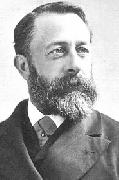 |
Bierstadt, Albert
|
|
The landscape painter
Bierstadt joined a surveying expedition to the western United States in 1858 after studying painting in Germany.
|
|
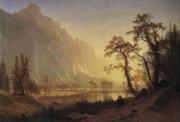 |
Bierstadt Albert
|
|
German-born American Hudson River School Painter, 1830-1902
was a German-American painter best known for his large landscapes of the American West. In obtaining the subject matter for these works, Bierstadt joined several journeys of the Westward Expansion. Though not the first artist to record these sites, Bierstadt was the foremost painter of these scenes for the remainder of the 19th century. Bierstadt was part of the Hudson River School, not an institution but rather an informal group of like-minded painters. The Hudson River School style involved carefully detailed paintings with romantic, almost glowing lighting, sometimes called luminism. Bierstadt was born in Solingen, Germany. His family moved to New Bedford, Massachusetts, in 1833. He studied painting with the members of the D??sseldorf School in D'sseldorf, Germany from 1853 to 1857. He taught drawing and painting briefly before devoting himself to painting. Bierstadt began making paintings in New England and upstate New York. In 1859, he traveled westward in the company of a Land Surveyor for the U.S. government, returning with sketches that would result in numerous finished paintings. In 1863 he returned west again, in the company of the author Fitz Hugh Ludlow, whose wife he would later marry. He continued to visit the American West throughout his career. Though his paintings sold for princely sums, Bierstadt was not held in particularly high esteem by critics of his day.
|
|
|
|
|
|
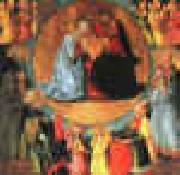 |
Bicci, Neri di
|
|
Italian Early Renaissance Painter, 1419-1491
was an Italian painter of the Renaissance. A prolific painter of mainly religious themes, he was active mainly in Florence and in the medium of tempera. His father was Bicci di Lorenzo (1373-1452). His grandfather, Lorenzo di Bicci (c. 1350-1427) was also a painter in Florence, a pupil of Spinello Aretino. He painted a St. Giovanni Gualberto enthroned, with ten Saints for the church of San Pancrazio. His journals from the years 1453-1475,
|
|
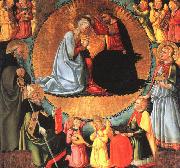 |
Bicci Di Neri
|
|
(1419-1491) was an Italian painter of the Renaissance. A prolific painter of mainly religious themes, he was active mainly in Florence and in the medium of tempera. His father was Bicci di Lorenzo. His grandfather, Lorenzo di Bicci was also a painter in Florence, a pupil of Spinello Aretino.
Neri di Bicci's main works include a St. John Gualbert Enthroned, with Ten Saints for the church of Santa Trinita, an Annunciation (1464) in the Florentine Academy, two altarpieces in the Diocesan Museum of San Miniato, a Madonna with Child Enthroned in the Pinacoteca Nazionale of Siena, and a Coronation of the Virgin (1472) in the abbey church at San Pietro a Ruoti (Bucine. He also painter numerous works in the area of Volterra.
His journals from the years 1453-1475, including the rates of remuneration for his work, are still preserved in the library of the Uffizi Gallery. They are known as Ricordanze.
|
|
|
|
|
|
|
|
|
| Wholesale China Oil Painting Wholesale Oil Painting China Xiamen Portrait Reproduction on canvas Chinese Oil Painting Wholesale USA Oil Painting |
|
|
|
|
|